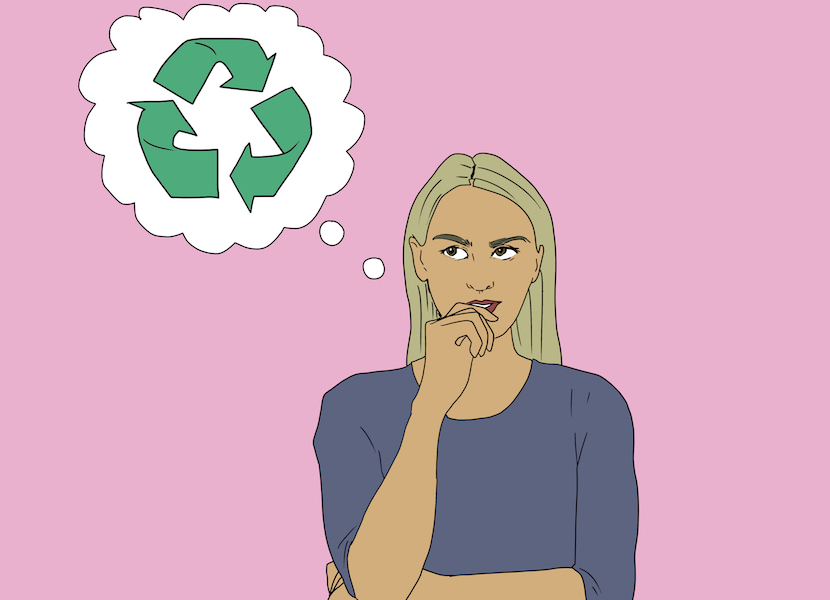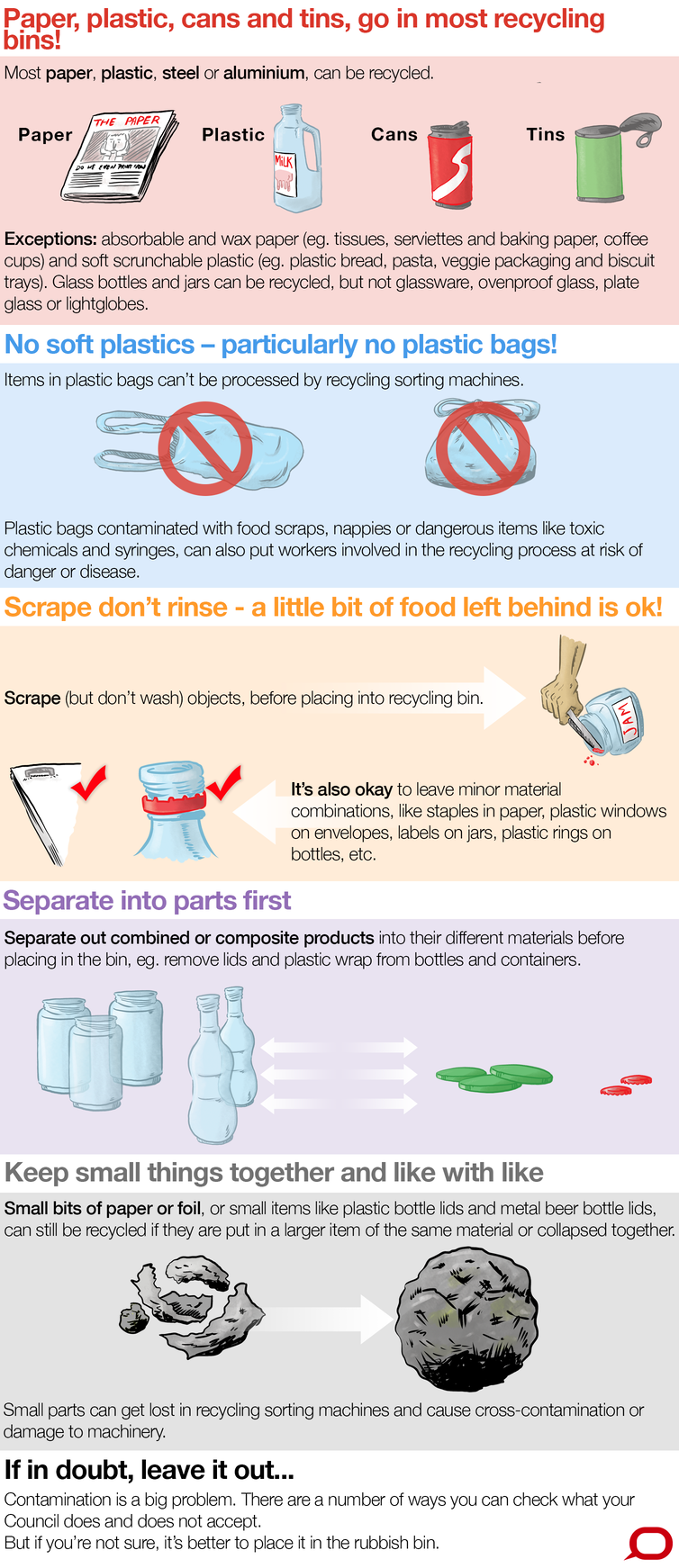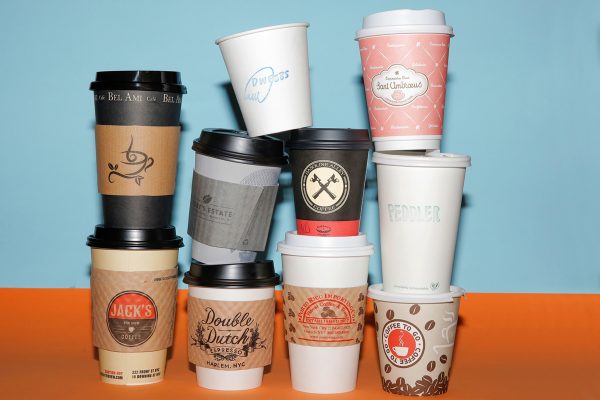There are so many things wrong with our world (understatement of the century), but there’s one that seems to have most of us stumped: recycling.
The global recycling crisis kicked off in 2017 when China said “no” and closed their doors to our recyclable crap. China was once the biggest buyer of recyclables, particularly used plastic and paper.
Now, we’re bewildered with what to do with it.
We, as consumers, have a responsibility to make sure our waste ends up where it needs to be.
Image via Fashion Journal

While the experts work on the end life of our recyclable waste, we need to make sure we’re doing our part too.
One of the main reasons why China closed its doors to our recycling was the contamination of recycling, lead by a lot of misinformation about how to recycle properly.
Let’s get it right this time.
A few things you need to know about your recycling
Sorting
Your home recycling is sorted by human hands.
That’s right; a person stands behind a conveyor belt, and manually removes every single non-recyclable item. Things like plastic bags, clothing, food scraps, and batteries are removed and thrown in landfill.
If you’re lucky, the plant will dispose of them responsibly instead of tossing all non-recyclables into landfill, but the chances are slim.
Symbols
The recycling symbol on a product doesn’t mean anything without a number. If that three-arrow symbol appears without any other directions around recycling, congratulations, you’ve just been greenwashed.
The recycling symbol attached to a number represents the type of plastic it is, and therefore, if and how it can be recycled.
- Plastic #1: Polyethylene Terephthalate (PET)
- Plastic #2: High-Density Polyethylene (HDPE)
- Plastic #3: Polyvinyl Chloride (PVC)
- Plastic #4: Low-Density Polyethylene (LDPE)
- Plastic #5: Polypropylene (PP)
- Plastic #6: Polystyrene (PS)
- Plastic #7: Other.
The recyclability of each number depends on the area you are in. Not all councils have the processes and facilities to recycle every number so be sure to check your local council rules.
Recycling responsibly can seem pointless in the middle of a recycling crisis, where chances are, your recycling is going to the same place as your landfill. But a conscious change from the consumer’s end is crucial to the global shift. We can’t solve this global recycling crisis without a team effort.

Image via The Conversation
How to recycle responsibly
Wash and dry your recycling
Contamination of food matter, fluids, and chemicals can mean the entire bin will be thrown into landfill. Plus, your recycling bin won’t stink out your kitchen.
Contact your local council for specific guides
Not all recycling numbers are recycled in every town. Make sure to check with your local council, to find out what you can put in your recycling bin. When you move to another city or town, make it a habit to learn what you can recycle, before you move there. If you’re traveling, do your research online, or ask the locals.
Squish your recyclables
Generally, it is best to squish recyclable bottles, cans, and tins, to save space. This is not the case in all recycling plants. Again, make sure to check with your local council.
Keep bottle caps on AND off- huh?
The debate around whether bottle caps should be left on or taken off has been going around in circles for decades. The bottle cap is usually made of a different plastic to the bottle, meaning it needs to be separated. However, bottle caps are small. They are less likely to escape and end up in the ocean or get stuck in the recycling machine when they are screwed onto the bottle. Different councils have different rules. Surprise surprise: ask your local council.
Avoid it in the first place
One of the best ways to recycle is not to recycle. If it can be avoided in the first place, you won’t have to worry about washing and sorting it. The circularity of recycling is great and reduces the amount of landfill we produce. But don’t get caught up on the idea that a sustainable lifestyle involves recycling more. Recycling is not the end solution. We should be recycling less.
Put it in landfill
If you don’t know, and can’t find a reliable source to direct you, put it in landfill. The risk of contaminating the recycling bin has more negative consequences, than the reward of it being recycled. Assuming that the sorter at the recycling plant will happily take your questionable yogurt container away, research where it goes, and recycle it responsibly for you, is a pipe dream.
Perhaps China’s abrupt “no”, was a good kick in the butt for us to address our waste, and do better than recycling. You can get your recycling habits practiced perfectly, but always remember:
Reduce, reuse, recycle. Recycling comes last.



